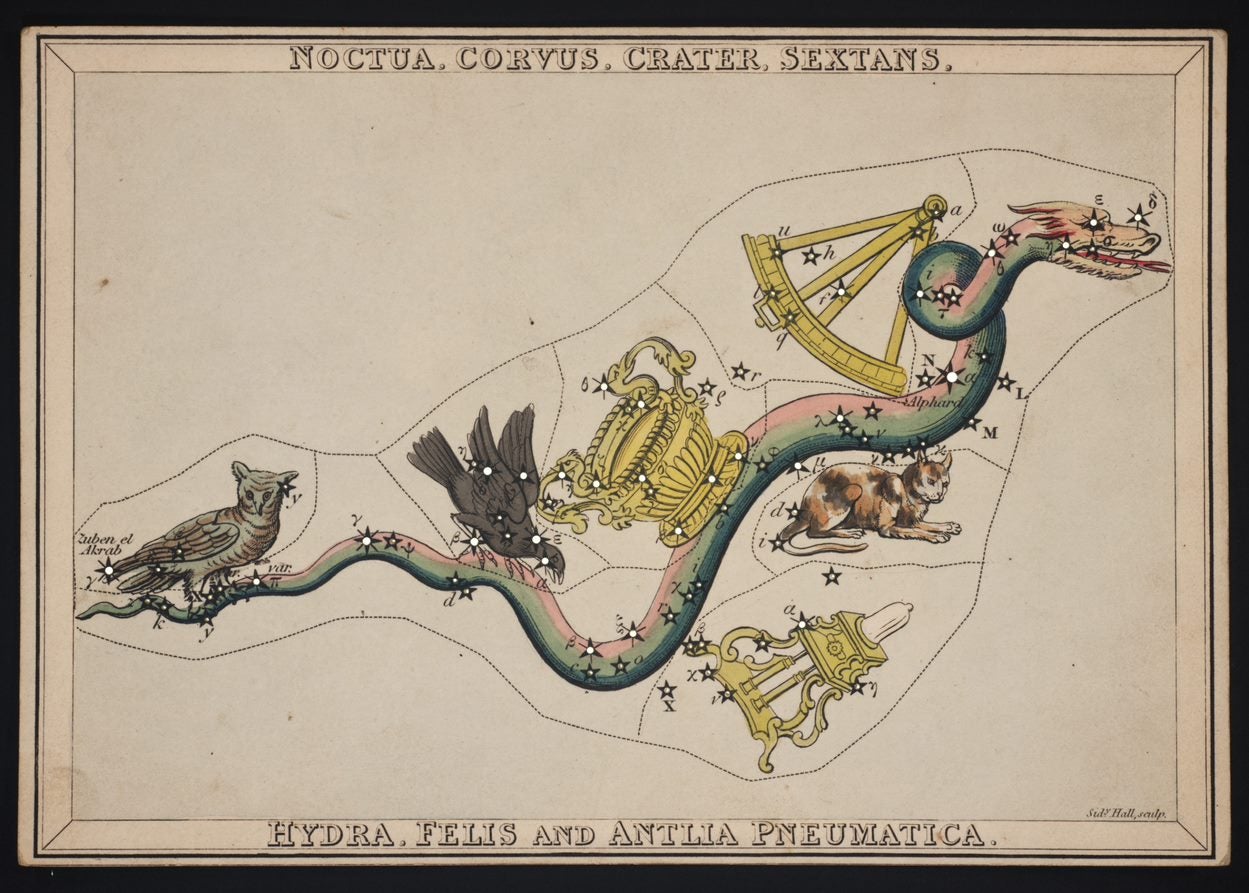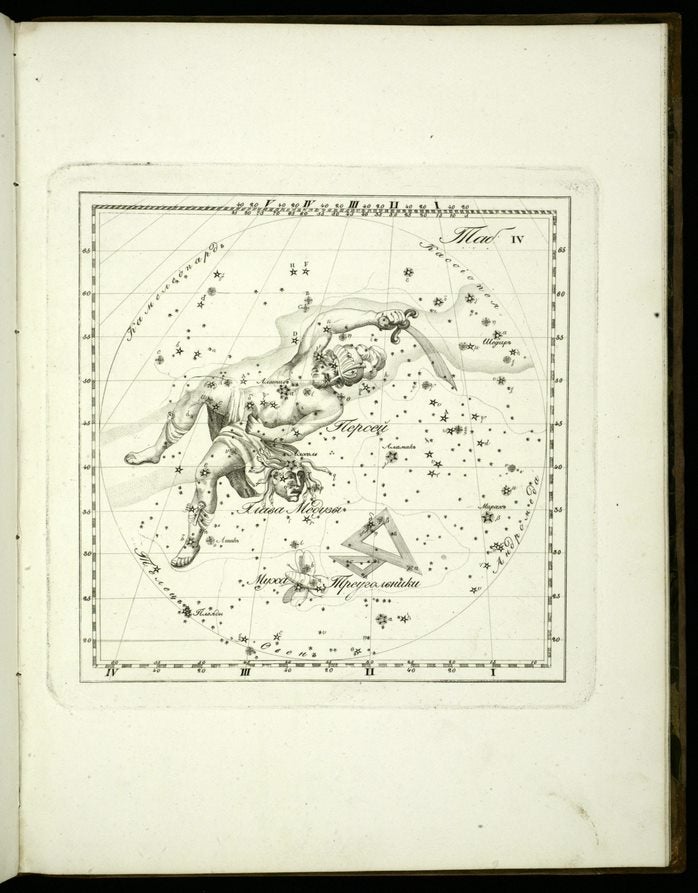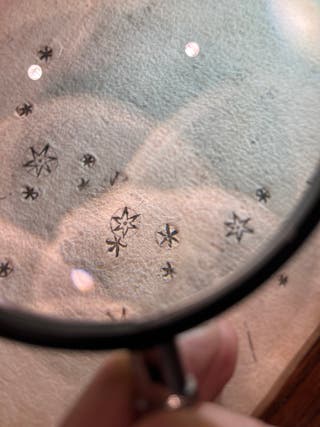Star Atlases and Celestial Maps
Linda Hall Library has an incredible collection of star atlases (also known as celestial maps), which illustrate the placement of stars and other astronomical objects in the night sky. These atlases also depict the stories humans created to align with celestial objects. Combining both scientific observation and artistic prowess, the digitized materials linked below can be used as primary source material for classes learning about astronomy, astrology, storytelling, Grego-Roman history, drawing, or painting.
To start the discussion, some well-known constellations today include Orion and his belt, the Big Dipper and Little Dipper, and all 12 zodiac constellations. Use the arrow ball below to scroll and explore these atlases to find other familiar stories below.

Poeticon astronomicon by Hyginus
This work contains individually illustrated constellations and the stories (in Latin) that go along with them. While this book was first published in Venice in 1485 by publisher, Erhard Ratdolt, the written material is attributed to the Roman author, Hyginus, who lived during the 1st century C.E. Images start on scan 53, which includes Ursa Major and Ursa Minor (also known as The Big Dipper and Little Dipper). Click here to view the whole work.

Urania's Mirror, or a view of the heavens by Jehoshaphat Aspin
Urania's Mirro was published in London in 1825. This item is comprised of 32 illustrated start chart cards, as well as an accompanying book. Notice how each card not only contains constellation drawings in color, but also has pinpoint holes where the stars would shine in the real night sky. When a card is held up to a light source, the holder can see these star placements, which perhaps could lead to a better understanding of how to see the constellation in the night sky itself. These holes might also be the culprit for this publication's scarcity today, as the reader would hold these cards up to a light source, often a candle, making them highly susceptible to fire damage. Click here to view the whole work.

Sozvi︠e︡zdīi︠a︡ predstavlennyi︠a︡ na XXX tablit︠s︡akh s opisanīem onykh i rukovodstvom k udobnomu ikh otyskanīi︠u︡ na nebi︠e︡ : sostavlen dli︠a︡ uchebnykh zavedenīĭ i li︠u︡biteleĭ astrognozīi / izdannyi︠a︡ By K. Reĭssigom
Roughly translating to, "Presentation of constellations in 30 tables with description and guide to finding them conveniently in the sky," this book is the first published Russian celestial atlas. Published in 1829, the Russian astronomer, Kornelius Reissig, created this book to be used by students and amateur astronomers. The first 50 pages of this material contains Russian text about the constellations contained within this star atlas. The star atlas's 30 plates of star maps start on scan 55. Click here to view the whole work.

